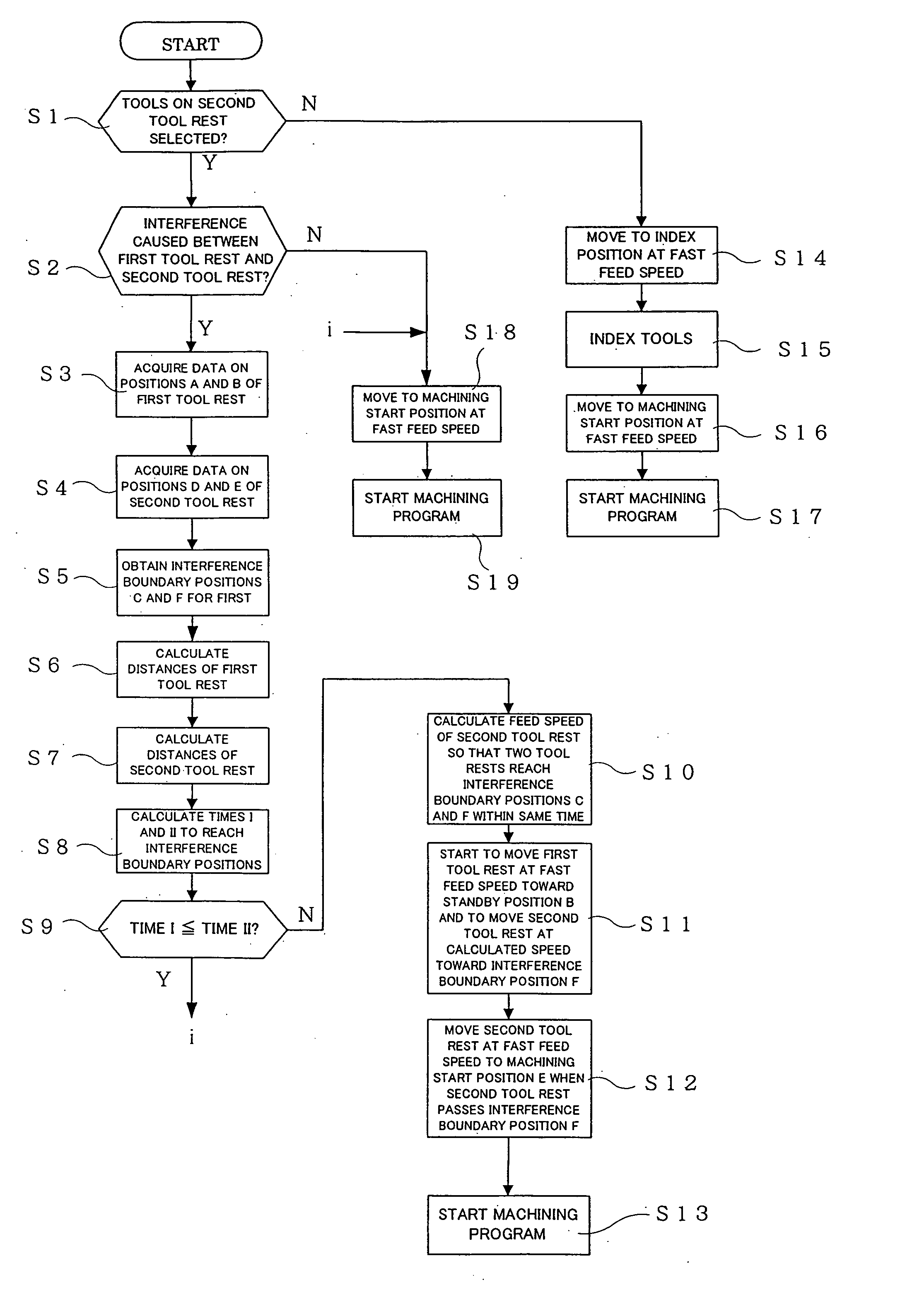Method of machining work in numerically controlled lathe
- Summary
- Abstract
- Description
- Claims
- Application Information
AI Technical Summary
Benefits of technology
Problems solved by technology
Method used
Image
Examples
first embodiment
[0038]FIG. 1 is a flowchart explaining a tool switching procedure according to a first embodiment of the present invention. FIG. 2 is a diagram explaining the positional relation between two tool rests in this embodiment. FIG. 3 is a diagram explaining one approach for interference judgment in this embodiment. FIGS. 4 are diagrams showing the positional relation between the first and second tool rests at stages when the machining with tools of the first tool rest is terminated, when both of the tool rests have reached interference boundary positions, and when tools of the second tool rest have reached a machining start position.
[0039] It is to be noted that a NC lathe in this embodiment has the same basic configuration as that of a NC lathe shown in FIGS. 8 and 9, and the same parts and members as those in FIGS. 8 and 9 are given the same numerals and are not described in detail.
[0040] Before starting the machining of a work W, a standby position B for a first tool rest 13 and a s...
second embodiment
[0067] Next, a second embodiment will be described referring to a flowchart of FIG. 6 and to FIG. 7 wherein a plurality of (four in the example shown in the drawing) tools installed on a second tool rest 15 are tools T21 to T24 of different lengths.
[0068] It is to be noted that this embodiment is the same as the first embodiment except that a procedure of setting interference boundary positions C and F is different from the procedure described above. Therefore, the procedure of setting the interference boundary positions C and F will be described below in detail, and the same parts as those in the first embodiment are not described. Moreover, for convenience, the following description is given on the assumption that after a work W has been machined with tools T1 of a first tool rest 13, the tool T24 installed on a lowermost step, among the tools T21 to T24 of the second tool rest 15, is selected as a next machining tool.
[0069]FIG. 6 is a flowchart explaining the procedure of setti...
PUM
| Property | Measurement | Unit |
|---|---|---|
| Diameter | aaaaa | aaaaa |
| Speed | aaaaa | aaaaa |
Abstract
Description
Claims
Application Information
 Login to View More
Login to View More - R&D
- Intellectual Property
- Life Sciences
- Materials
- Tech Scout
- Unparalleled Data Quality
- Higher Quality Content
- 60% Fewer Hallucinations
Browse by: Latest US Patents, China's latest patents, Technical Efficacy Thesaurus, Application Domain, Technology Topic, Popular Technical Reports.
© 2025 PatSnap. All rights reserved.Legal|Privacy policy|Modern Slavery Act Transparency Statement|Sitemap|About US| Contact US: help@patsnap.com



